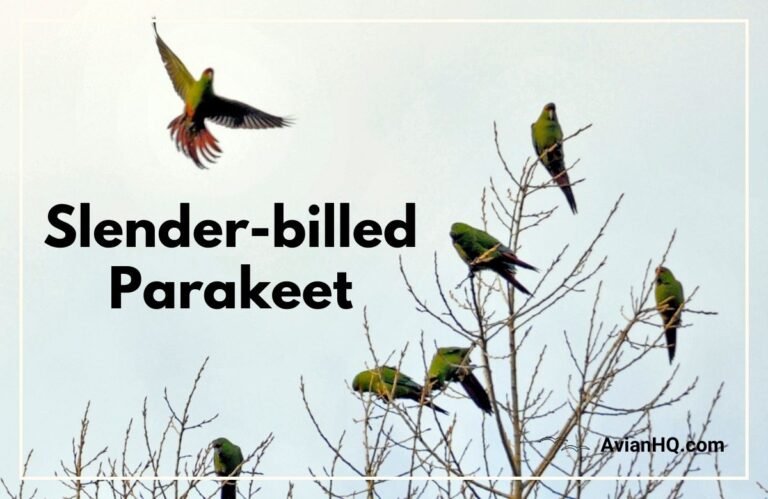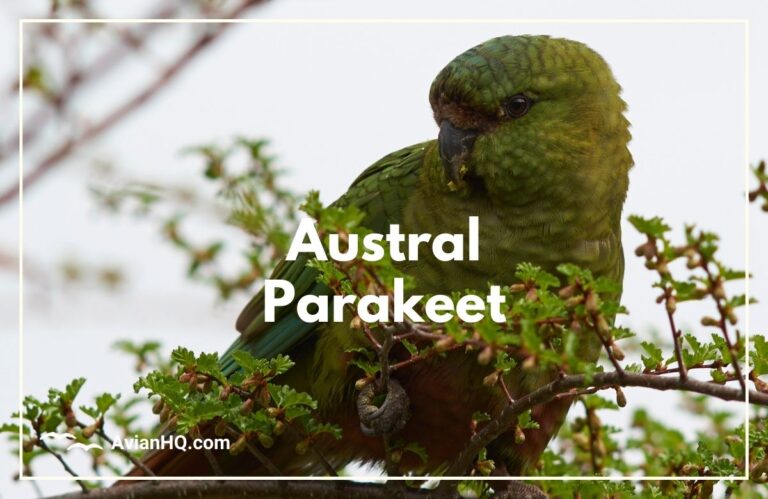Genus: Enicognathus
Imagine yourself deep in the lush forests of Chile or Argentina when a flock of bright red and green birds suddenly lands in the trees around you. You’ve just had an encounter with parakeets in the genus Enicognathus, medium-sized parrots living in South America.
These birds fill an important role as seed dispersers in their forest habitats. Their specialized beaks and tongues let them access seeds other birds can’t. Two species even live on remote islands off the coast of Chile. Sadly their habitats are threatened by deforestation. Some Enicognathus face extinction without greater conservation efforts.
This article will spotlight two Enicognathus species while sharing key facts about the behaviors, ecosystems, and challenges impacting these fascinating parakeets. Let’s meet our feathered friends!
“Parakeets serve tropical forests by spreading seeds near and far. Their survival ensures healthier forests for all.”
Species Spotlights
These parakeets showcase the diversity found across the Enicognathus genus. They occupy different habitats yet play similar ecological roles.
Austral Parakeet (Enicognathus ferrugineus)
The Austral Parakeet lives in Chile and Argentina in flocks numbering six to thirty bright red and green birds. With a body length around 12 inches (30 cm), it is larger than related parakeet species.
- Identifying Features:
- Bright red belly band
- Green wings and back
- Long pointed tail
- Curved grey beak
- Habitat and Diet:
- Coastal and Andean forests
- Feeds on seeds, berries, fruit
- Nests in tree cavities
- Coastal and Andean forests
This parakeet’s vibrant colors and loud contact calls make it a beautiful forest presence from treetops to forest floors. They fill seed dispersal roles across a range spanning over 620 miles (1,000 km).
Slender-billed Parakeet (Enicognathus leptorhynchus)
The Slender-billed Parakeet is a true island specialist found only on the Chonos and Guaitecas archipelagos off southern Chile. Reaching just 8 to 10 inches (20 to 25 cm) long, they are Chile’s smallest parakeets.
- Identifying Features:
- Brilliant green with red and blue accents
- Distinct slender grey beak
- Short tail
- Habitat and Diet
- Lowland forest and scrub
- Coastal edges
- Seeds, buds, small fruit
Their estimated population is only 1,200 to 1,500 remaining birds. This range-restricted “micro-endemic” faces severe decline without habitat conservation of their limited island ecosystems. Their unique traits testify to Chile’s high yet threatened biodiversity.
Behavior and Intelligence
Enicognathus parakeets showcase interesting behaviors and adaptations suited to their forest niches across South America.
Diet
- Forage on seeds, berries, buds, fruit
- Use specialized tongue with brushy tip to access seeds
- Slender bills access narrow spaces other birds can’t
- Distinct call notes may coordinate flock foraging
Social Groups
- Generally quiet but gather in noisy flocks of 6 to 30 birds
- Groom each other with their beaks
- Probably mate for life once paired off
Nesting
- Excavate nests in rotted tree cavities
- Average clutch size: 3 to 4 eggs
- Incubation over 3 to 4 weeks
- Fledglings leave nest at 5 to 6 weeks old
Range and Roosting
- Occupying forest across over 620 miles (1,000 km)
- Communal roosts at dusk with hundreds clustered together
Overall these parakeets showcase complex social structures and adaptations to thrive in their forest homes across Chile and Argentina. Their specialized ecological roles testify to nature’s ingenuity on remote islands and vast mountain ranges alike.
Cultural Significance
Unlike more famous parrot species, Enicognathus parakeets have little cultural lore or prominence. A few factors limit their visibility and symbolic roles:
Reclusive Forest Nature
- Shy behavior unless in noisy flocks
- Canopy and forest dwelling makes sightings rare
Limited History as Pets
- Hard to breed consistently in captivity
- Was imported to Europe for pet trade but unsuccessful
- Close relationship with popular pet parrots like conures
Range Restrictions
- Found only in southern South America
- Island forms have tiny isolated populations
- Simplistic or imitation vocal skills
However, some Mapuche names for Austral Parakeets associate them with the red flower color tying into indigenous spiritual earth connections.
Overall these parakeets lack the cultural legacy of large macaws or talkative parrots further north. But appreciation for Chile’s island diversity could raise recognition for species like the Slender-billed Parakeet. Their colorful flashes through forest canopies deserve celebration even if chiefly noticed only by devoted birdwatchers rather than the wider public.
Threats and Conservation
Parakeet species worldwide face habitat pressures from deforestation and climate shifts. The remote Enicognathus genus highlights how isolation cannot fully protect birds from human impacts:
Deforestation
- Logging and land clearing primary threat
- Fragments key nesting and foraging areas
Invasive Species
- Compete for nest sites and food sources
- Examples: honeybees, mink
Climate Shifts
- Altering island and mountain climates
- May impact seasonal food availability
Conservation groups recognize these threats. Both highlighted species have an IUCN status of Vulnerable based on declining populations. Strategies to aid their survival include:
- Habitat preservation through park protections
- Reforestation efforts to reconnect fragments
- Captive breeding populations as a safeguard
- Public education about native species
In the end parakeet conservation relies on policy driving habitat security and public campaigns building connections to southern South America’s exceptional biodiversity worth saving. From remote islands holding a few hundred Slender-billed Parakeets to Austral Parakeets migrating over 600 miles in the Andes, appreciating and preserving niche species animates entire ecosystems.
Conclusion
The genus Enicognathus spotlights Chile and Argentina’s threatened yet fascinating biodiversity. These parakeets showcase specialized forest niche adaptations enabling their seed dispersal roles. Whether the Austral Parakeet’s bright belly flashing through canopies or the Slender-billed Parakeet’s petite specialized form on remote islands, they animate their ecosystems.
Yet in an age of global extinctions, appreciation must drive action. From community efforts restoring native forests to international policies targeting carbon emissions, human impacts threaten Enicognathus parakeets and countless other species. Their conservation depends on habitat protections driving reforestation and captive breeding efforts.
In the end, saving niche species saves entire habitats. As parakeet flocks take wing through restored forests in decades to come, such second chances will offer hope nature’s ingenuity can overcome short-term human pressures. If enlightened conservation policies and habitat security can preserve Enicognathus populations, they also offer living proof that biodiverse wildernesses can persist into the future.



